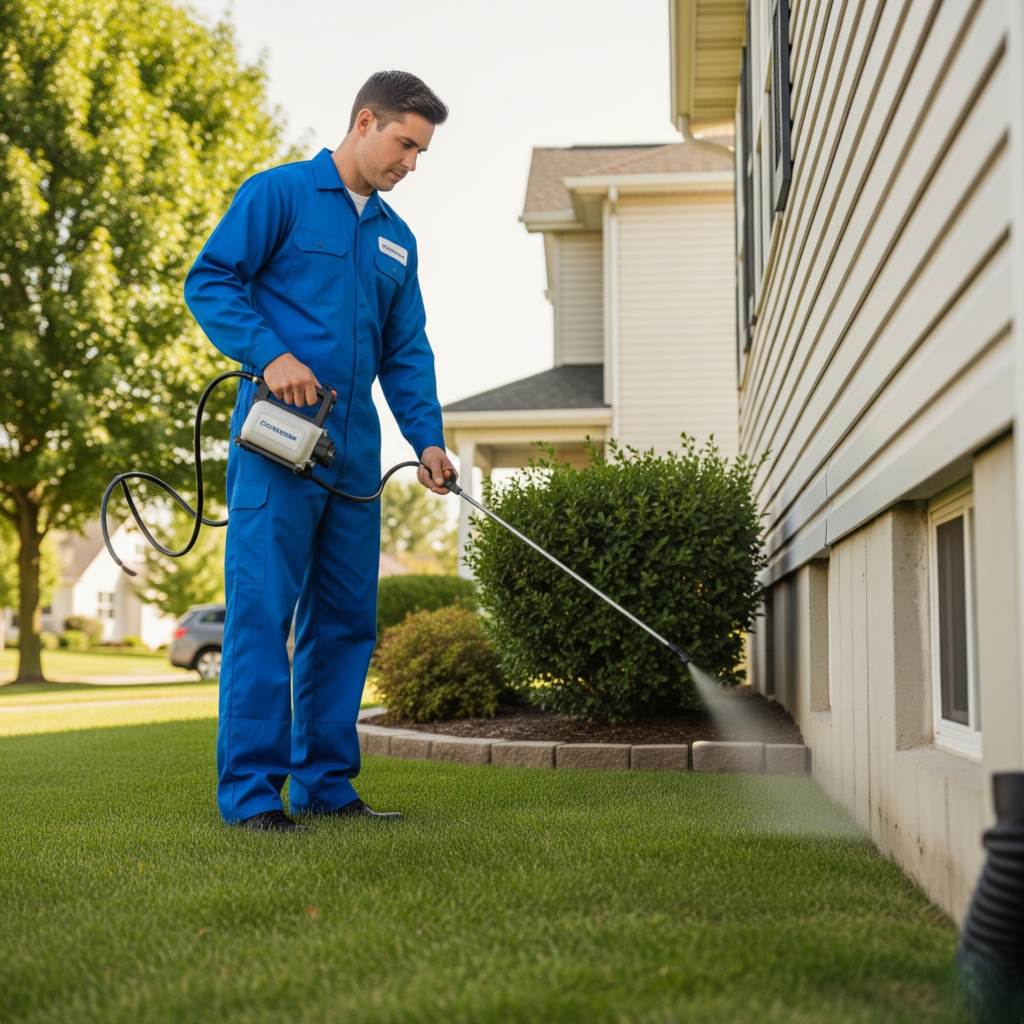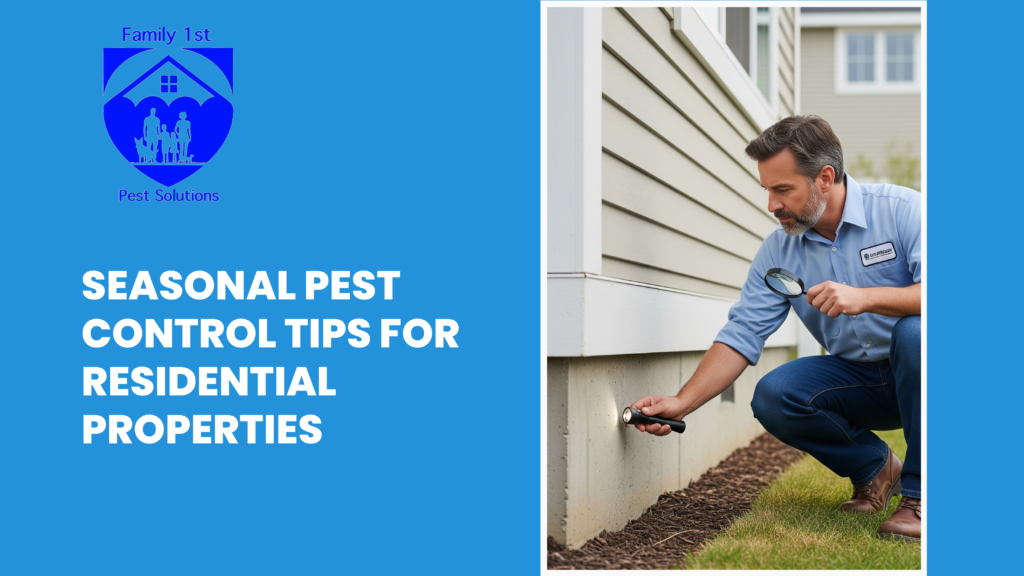Introduction
Your home offers warmth in winter, shade in summer, and food all year; unfortunately, pests think so too. From ants and spiders to rodents and roaches, unwanted guests adapt to every season.
With the right seasonal pest control tips, you can keep your residential property protected, reduce infestations, and save on costly extermination later.
Here’s how to stay ahead of pests, one season at a time.
Spring: Block the Invasion Before It Starts
As temperatures rise, insects emerge from winter hiding spots.
Tips:
Inspect and seal gaps around windows, doors, and foundations
Clear yard debris and leaves that shelter pests
Trim branches away from siding and rooflines
Check screens for tears to keep flying insects out
Treat outdoor areas with a barrier spray if needed
Common spring pests:
Ants, spiders, termites, and carpenter bees start to become active.
Summer: Focus on Moisture & Outdoor Activity
Warmth and humidity bring peak pest season, especially for insects that breed in standing water.
Tips:
Empty birdbaths, buckets, and clogged gutters to stop mosquitoes
Store pet food and trash in sealed containers to deter raccoons and rodents
Keep grass and shrubs trimmed; tall vegetation shelters pests
Inspect decks, porches, and fences for termite or carpenter ant activity
Common summer pests:
Mosquitoes, flies, wasps, fleas, and stinging insects increase in hot months.
Fall: Prepare for Overwintering Pests
As temperatures drop, pests look for warm places to spend the winter.
Tips:
Seal cracks and gaps with caulk or weatherstripping
Install door sweeps on exterior doors
Store firewood at least 20 feet from the house
Vacuum up ladybugs or stink bugs instead of squashing (which can attract more)
Common fall pests:
Rodents, stink bugs, boxelder bugs, and spiders begin to move indoors.
Winter: Watch for Rodents & Hidden Invaders
Cold weather doesn’t stop all pests; it just moves them indoors.
Tips:
Check attics and basements for signs of mice or rats
Repair torn insulation or damaged vents that let pests in
Reduce clutter in storage areas where insects hide
Continue monitoring for cockroaches and silverfish in kitchens and bathrooms
Common winter pests:
Mice, rats, silverfish, cockroaches, and spiders often remain active inside.

Year-Round Pest Prevention Tips
Keep gutters clear to prevent moisture damage that attracts termites
Use yellow “bug lights” outdoors to reduce night-flying insects
Inspect groceries and storage boxes before bringing them inside
Clean crumbs and spills quickly; even small amounts can attract ants or roaches
Schedule professional pest inspections annually for early detection
Natural & Eco-Friendly Pest Control Ideas
- Diatomaceous earth: Works against crawling insects
- Cedar chips: Repel moths and some beetles in closets
- Essential oils (peppermint, eucalyptus): Can deter spiders and ants near windows
- Vinegar spray: Helps clean surfaces and discourages ants
Tip: Natural methods are best for prevention, not for large infestations.
When to Call a Professional
Large infestation or repeated pest sightings
Signs of termites (mud tubes, hollow wood)
Rodent droppings or gnawed wires
Allergic reactions to bites or stings
Professional pest control companies offer customized seasonal plans, including exterior treatments that act as a first line of defense.

Conclusion
Every season brings unique pest challenges, but a proactive, seasonal approach keeps your home secure.
Spring: Seal and clean
Summer: Remove moisture and trim vegetation
Fall: Close entry points and reduce clutter
Winter: Monitor indoor spaces for hidden pests
Investing a little time each season protects your property, your health, and your peace of mind, all year long. Contact us today!

